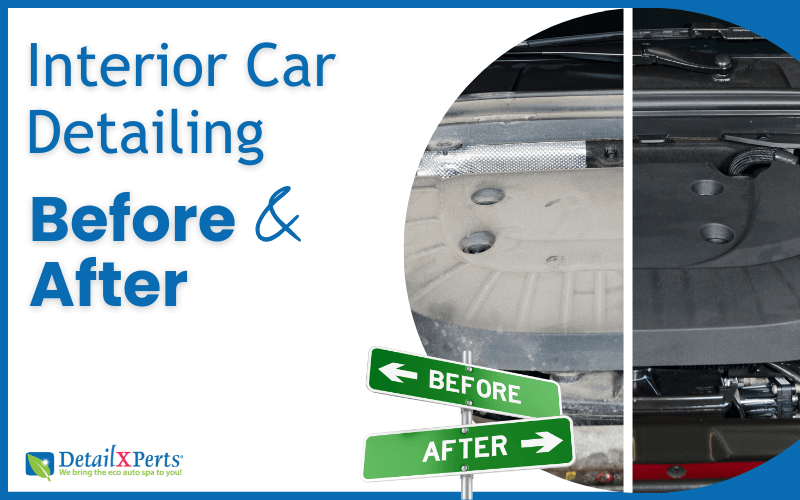Time and again, we’ve reiterated why using dish soap to wash car is not a good idea. It removes wax, causes oxidation, and leads to foggy headlights among others. However, some areas of your vehicle can benefit from the occasional use of dishwashing detergent for car cleaning. What areas are these? Read on and find out.
Dish Soap to Wash Car: 7 Areas Where It’s OK
1. Windshield and Windows
Do you hear a squeaky sound each time you use your car wipers? Chances are, bug residues, dirt, and other contaminants have accumulated in them. Wiping each wiper gently with a solution of 1/4 cup household ammonia with 1-quart cold water can remove the debris.
Now that your wipers are clean, you’ll need something to keep them that way. Here’s a quick hack.
Add a couple of teaspoons of dish soap to three cups of vodka and 4 cups of water. Mix thoroughly, then pour some of the solution into the windshield reservoir.
Use the remaining solution to wipe the entire windshield and all your car windows. Leave for a few minutes. Rinse with tap water. Dry thoroughly.
2. Engine
You’ve read that cleaning your car’s engine is a must if you want to make it last longer. But when you open the hood – whoa! There’s gunk all around!
That’s when you need a homemade engine cleaner. Just combine one and a half gallons each of water and concentrated ammonia in a bucket. Add a tablespoon of dish soap. Mix thoroughly. Transfer enough solution to fill an empty spray bottle. Spray onto the engine and engine bay. Leave for a couple of minutes, then wipe off with a towel doused with water.
3. Fabric Seat Cover and Upholstery Stains
Oil, grease, coffee and ketchup stains, when not immediately removed, can leave unsightly spots on your car seat covers and upholstery. To remove stains on car seats, apply a small amount of dish soap directly on the stain. Leave for ten minutes. Wipe it off with a wet towel until there are no traces of soap residue. Dry thoroughly.
To remove grease stains on upholstery, put a few drops of dish soap in an empty spray bottle. Add some water. Shake the sprayer. Then spray the solution onto the stains. Leave for ten minutes. Wipe off with a wet towel. Brush off stubborn stains with a soft-bristled upholstery brush. Then wipe off. Repeat the process if needed.
4. Rims and Tires
Yes, dish soap can toughen rubber – only when you use it frequently and improperly. Cleaning rims and tires with dish soap should only be done when they’re covered with mud, tar, and bugs. Dish soap can break down these contaminants faster and more effectively.
To clean your muddy rims and tires, first use a pressure washer to remove huge pieces of contaminants. Get a gallon bucket filled with water. Add a tablespoon of dish soap. For the rims, use a sponge to apply the solution. Rinse. For the tires, dip a clean tire brush in the bucket and use this to scrub a tire. Rinse. Move to the next tire.
Take note – always rinse the rim or tire immediately to avoid the soap from drying as this can cause premature fading.
5. Car Paint
Yes, you can use dish soap to wash car paint. But only for the purpose of pre-waxing. Dish washing liquids contain powerful substances that can totally remove grease – and wax.
Dilute a tablespoon of dish soap in a bucket of water. Apply the solution on your car, starting with the roof, going down. Work one section at a time. Then rinse before moving on to another section. Give your car a final rinse after you’ve soaped everything. Dry thoroughly. Apply your favorite wax and sealant.
6. Rubber Mats
Rubber mats protect your car floors from mud, salt, dirt, and similar contaminants. But they won’t be serving their purpose if they are all covered with dirt, can they? So, how to clean rubber car mats?
Remove the rubber mats from your car. Whack a couple against each other to remove debris. Use a pressure washer to dislodge sand, toughened mud, crumbs, etc. On a clean sponge, put a few drops of dish soap. Use this to clean the rubber mats. For stubborn contaminants, use a mat scrub brush. Rinse thoroughly. Hang to air dry.
7. Fenders and Mud Flaps
Fenders and mud flaps protect your vehicle from debris, mud, and different road conditions. But with all that mud, cleaning them can be quite a challenge. Not when you use a few drops of dish soap to wash car fenders and mud flaps. However, you should dilute it in a bucket of lukewarm water.
First, use a pressure washer to dislodge the mud from the fenders and mud flaps. For the fenders, dip a soft-bristled brush in the soap and water solution. Use this for scrubbing. Cleaning the mud flaps will require a long-handled brush. Dip this in the bucket and scrub away. Rinse and dry thoroughly.
These are just some places where you can use dish soap to wash car. Just remember to use caution if it will be your first time to do so. Test your soap-and-water solution on an inconspicuous area of your vehicle and rinse off immediately. Dry thoroughly. If you notice fading or discoloration, discontinue the use of dish soap.
Now, if you want a car that sparkles and gleams all over, schedule an appointment with DetailXPerts. We’ll have your car professionally detailed, inside and out, using no dish soap but the power of steam, all at your best convenience!
Enjoyed this post? Sign up for our newsletter to receive more valuable tips, ideas, coupons, and extras!





